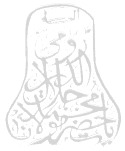Shams-i Tabriz on Sema

In the people of God, these (spiritual) manifestations and visions are more common during the Sema, when they have passed beyond their usual universe of existence. Sema carries them out of other worlds to the Truth. It is true that there is a kind of Sema that is forbidden; but it is blasphemy to say that the Sema performed by God’s people is a sin. That hand which moves without the Divine exuberance will burn in hell for sure, and the hands that rise in Sema will reach paradise — for sure. And there is a Sema that is permissible but not obligatory. This is the Sema of those Sufis and ascetics who live in a state of fasting. It brings tears and softness of heart to them. There is no doubt that they will also enter Paradise. And another Semais religiously a must. This is the Sema of the attained ones who have reached the holy state of mind. And another is a duty applicable to all, as the daily prayers and the fast of Ramadan. Just as food and water are necessary in the time of hunger and thirst, this Sema is necessary for the spiritually mature, because it increases their joy of life. If one of the mature ones begins to whirl in the East, another one starts moving in the West. They are aware of each other’s state.
From the Maqalat of Shams-i-Tabriz
Shams also tells this story:
A certain shaikh said, “The Caliph has forbidden the Sema.” This prohibition turned into a knot within a certain dervish. He fell ill and they took him to a specialist. He examined his pulse and looked for the cause of illness. It was like nothing he had ever learned about. He couldn’t find anything wrong with him, but the dervish died. Afterwards, the doctor performed an autopsy and found the knot within his chest. It had become a carnelian. The doctor kept this gem until a time when he needed some extra cash. The gem passed from hand to hand until it reached the caliph, who had the gem set into a ring. One day, that same caliph was attending a Sema, watching from above, when he discovered that his clothes were covered with blood. He examined himself but could find no wound anywhere. He felt for his ring and the stone was gone. Later they traced that gem back to its original owner and the doctor told them the whole story mentioned above.
Sema, Yesterday and Today
THE WORD SEMA comes from a root meaning to listen, suggesting an occasion when music is used to uplift the soul. The form that sema and whirling took in Rumi’s day was probably informal and ecstatic, consisting of long nights of zhikr, music and poetry. After the master’s death and under the guidance of his dutiful son, Sultan Veled, the sema took on a more ceremonial form, as a kind of embodied cosmology.
The sema that we witness today has existed more or less unchanged for at least several centuries, and probably goes back to the time of Sultan Veled. It is a ceremony of worship, a meditation in movement, in which the human being becomes pure axis, integrating all levels of being within himself, including the physical, emotional, mental and spiritual levels. To perform the sema is to be centered on the timeless and spaceless, and to experience the meaning of these words from the Holy Qur’an: “Wherever you turn is the face of God.” It is to be unified with others who are compelled by the same spiritual longing. It is to be emptied of all distracting thoughts and to be filled with the presence of god. It is itself a journey taken in a direction opposite to that of temporal time, a journey of return to the Source, through our innermost center, where we are closest to the Divine.
It would be worthwhile to try to describe what occurs within individuals as they enact this ceremony year after year as part of their spiritual training, for the ceremony itself teaches its secrets over time and no two ceremonies are experience in the same way. The individual semazen, or dervish, must be able to expand his awareness to include several dimensions at once: He or she must focus on his or her own physical axis, which in this case is the left leg and foot, revolving three hundred and sixty degrees with each step, inwardly pronouncing the name of God, keeping an awareness of exactly where he is in space and the narrow margins of error in this tight choreography, feeling a connection through the shaikh of the ceremony to the whole lineage and also the founder of the order, Mevlâna, and most of all turning with a deep love of god. The sheer impossibility of accomplishing these tasks through one’s own will can push one toward another possibility: that of letting a deeper will take over. In this way, the sema becomes a lesson in surrender.
The Mevlevi tradition has always been a way of both aesthetic refinement and inner development. It includes not only the writings of Mevlâna Jalâluddîn Rumi, arguably as great a literary opus as exists on earth, but seven centuries of other Mevlevi poets and scholars as well. In addition there is the vast tradition of Turkish classical music with its subtlety of melody and modes which generations of Mevlevi composers made possible. And finally there is the whole Mevlevi way of life: progressive in spirit and spiritual to its core. We give thanks to the One Creator and Bestower of Form for this heritage.

